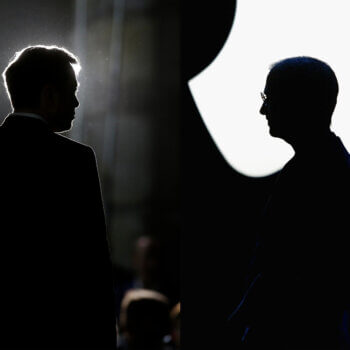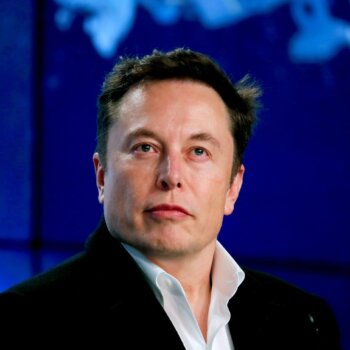Key Takeaway:
Research shows that people worldwide are unaware of how what they hear affects their attitudes and behavior. This year, Tesco’s Christmas advert features OMC’s “How Bizarre” song, while John Lewis’s features a young boy raising a Venus flytrap to Andrea Bocelli’s “Festa”. Morrisons and Waitrose use 1980s hits, while Marks & Spencer uses Rita Ekwere’s contemporary cover of Meat Loaf’s “I’d Do Anything for Love.” Music has long been used to influence spending, but research has revealed that it can have no effect on sales depending on genre, loudness, tempo, and familiarity. Retailers are increasingly responsive to research revealing our limited tolerance for repetitions of overly familiar songs and our consistently positive response to music that emphasizes warmth, comfort, and nostalgia.
In my research, I have spent a good deal of time speaking with people from across the world about their relationship with sound and music – how it features in their everyday lives and how it influences their attitudes and behaviour. One of the most consistent findings is that, irrespective of culture or place, we are largely unaware of how what we hear affects how we think and act.
This year, Tesco’s Christmas advert tells the tale of a teenager resisting the urge to succumb to the Christmas spirit to the tune of OMC’s 1995 song, How Bizarre. John Lewis’s sees a young boy raise a giant – and troublesome – Venus flytrap to the score of Festa, a new composition performed by Andrea Bocelli.
Morrisons and Waitrose both opt for 1980s hits, featuring Starship’s Nothing’s Gonna Stop us Now and Depeche Mode’s Just Can’t Get Enough respectively, while Marks & Spencerpresents us with Rita Ekwere’s contemporary cover of Meat Loaf’s 1993 anthem, I’d Do Anything for Love.
There are clear consistencies in terms of the approach to music – but what is the rationale? How does music support these brands, and what subconscious effect is this having on our shopping behaviour?The 2023 John Lewis Christmas advert features an original song by Andrea Bocelli.
The power of nostalgia
“Mental accounts theory” considers the factors that influence our rational spending and our susceptibility to impulsive purchases. It is a spectrum, with analytical spending on one side and emotional, impulse-driven spending on the other.
We can control many of the factors that encourage us to spend impulsively, such as avoiding shopping in the evening, socially, or under time pressure. However, one factor is a little more devious – nostalgia.
Nostalgia diminishes our desire for money while enhancing our desire for social and empathetic experiences. It both pushes and pulls us towards impulsive spending. But nostalgia is a well-established marketing tool that aligns well with the empathetic and affective nature of Christmas shopping.
Research has shown that big retailers are all too aware of this – as shown by their Christmas strategies that consistently aim to establish, refine or reinforce a sense of brand loyalty. So, how does music factor into this equation?
Christmas music in shops
Music has long been used to influence our spending. The basic presumption is that music makes us happier, and being happier makes us spend more. But research has revealed this to be an oversimplification. Music can have no effect – or even a negative effect – on sales depending on its genre, loudness, tempo and familiarity.
While earlier research suggested Christmas music had a particular penchant for making us impulse buy, more recent studies point to consumers becoming increasingly aware of this effect and attempting to become more conscious of their budget.
Mental depletion (when strain on our physical or emotional energy diminishes our cognitive faculties), however, tips the balance against us once more, acting as a powerful primer to the effects of music upon our impulse spending.
Retailers are also becoming increasingly responsive to research in this field, which reveals our limited tolerance for repetitions of overly familiar songs – especially in genres that are themselves repetitive and lacking in compositional complexity. It has also tipped off retailers to our consistently positive response to music that emphasises warmth, comfort and nostalgia.
As a result, the Christmas music we hear while out shopping is likely to have been carefully curated based on a consideration of us as consumers, with retailers seeking to identify the music most likely to evoke their target feelings of warmth and nostalgia.

Christmas music in adverts
Not content with influencing our behaviour while out shopping, music is a near-ubiquitous presence in television advertising. Earlier research in this area reliably pointed to the value of emotional appeal in engaging a consumer audience, enhancing their perception of the brand and, ultimately, influencing their decision-making.
This idea of emotional appeal as a mechanism for reaching consumers has persisted, with more recent research exploring specific qualities of advertising that reliably evoke it. Just as with music in shops, these qualities are perceived as warmth, nostalgia and anticipation. When used in this way, music has been shownto possess a near-universal power to evoke emotional appeal in advertising, even when the overall attitude towards the advert is split.
But why the ongoing use of 1980s and now 1990s popular music? The cynic in me has a theory. In the UK, people aged 35 to 54have the most disposable income – and also, as parents and new grandparents, the most spending commitments, particularly around Christmas.
It’s unsurprising then, that the nostalgic music of this demographic’s youth is providing the soundtrack to this year’s Christmas adverts. As someone currently near the centre of this demographic, let’s just say I know all the words to I’d do Anything for Love.





























